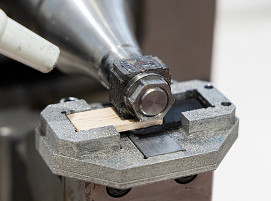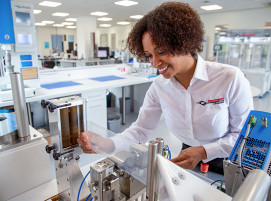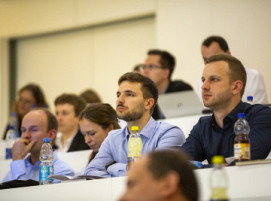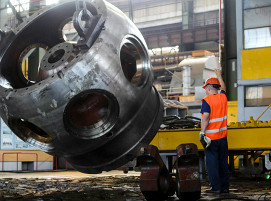With the equipped testing machine, large cross-sections (diameters up to 80 mm) or large sheet thicknesses up to 90 mm (including welded components) under high loads up to 2MN can be dynamically testet. In comparison to the "conventional" testing machines, this one also allows for much faster testing times. This enables not only "normal" fatigue tests but also endurance strength tests up to very high load cycle numbers (up to 10 million cycles and beyond) within a reasonable time frame.
The newly developed hydraulic clamping device by SincoTec streamlines operational processes during which the test pieces are mechanically clamped. This method serves several advantages: It enhances the durability of the sealing system and simultaneously ensures higher operational safety. The testing machine also offers sustainability benefits. In the execution of experiments to create a Wöhler curve, energy savings compared to a hydraulic testing machine can reach up to 70 per cent.
Thanks to the reconfiguration of the 2MN resonance testing machine, Fraunhofer IGP is now able to dynamically test materials with large cross-sections or sheet thicknesses under high loads up to 2MN within a significantly reduced time and cost framework.








